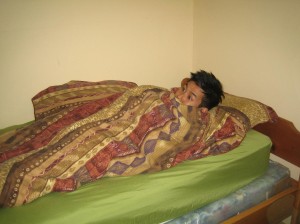Brucellosis is an infection triggered by various species of the Brucella bacteria. The condition is characterized by fever and systemic symptoms.
The condition is mainly acquired by direct exposure to infected farm animals and consumption of unpasteurized contaminated milk or other dairy products. One can also acquire the condition if in contact with infected deer, dog, moose, buffalo or other animals.
The bacteria can spread via the air and has been utilized in biological warfare. Nevertheless, brucellosis is rarely spread from one individual to another.
Indications of brucellosis
An individual with brucellosis usually have fever that can recur repeatedly for months and oftentimes years. The other early indications include the following:
- Night sweats
- Chills
An individual with brucellosis usually have fever that can recur repeatedly for months and oftentimes years. - Severe headache
- Bone and joint pain
- Low back pain
- Diarrhea
The late symptoms might include weight loss, appetite loss, difficulty sleeping, severe constipation and depression.
Oftentimes, the infection develops in the brain, long bones, back bones, tissues covering the brain and spinal cord, joint or the heart valves.
If the individual does not develop infections in these tissues and organs, recovery spans for 2-3 weeks even without treatment. Nevertheless, the infection is known to persist in some cases.
Diagnosis
The doctor will take a sample of blood that is sent to a laboratory so that the bacteria is cultured. In most cases, the doctor will also measure the antibodies to the bacteria in the blood.
Management
The doctor will provide 2 antibiotics at the same time in order to increase the chance for a cure. In most instances, one of the antibiotics given is doxycycline that is taken orally.
The second antibiotic can either be gentamycin or streptomycin that are injected daily or ciprofloxacin or rifampicin that are given orally.


